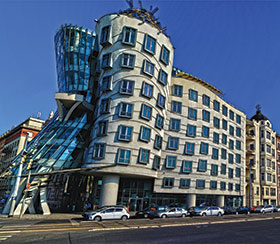

Effective well-utilised building management systems (BMS) provide the core management tool required by facilities’ security, asset and SHE managers to ensure compliance with, and achievement of Green Lease requirements, SHE, insurance compliance, effective, security controls, monitoring of the energy management plans (EMP), and reports for the building management committee (BMC).

It enables facilities, security and SHE managers to provide the optimal working environment while minimising the costs to both property administrators and tenants. Effective BMS utilisation allows for optimal building performance by extending the operational life of equipment and systems through reducing loads and operating hours. Maintenance and capital costs are therefore reduced and less embedded energy is consumed through equipment replacement and upgrades. Equipment alarm and fault notification, reduces down time and consequential impact.
Industry jargon
BMS is also known as building automation systems (BAS), building management and control systems (BMCS), direct digital controls (DDC) and building controls. Other terms associated with control systems include:
• Supervisory, control and data acquisition (scada).
• Programmable logic controllers (PLC).
• Energy management system (EMS).
• Data gathering panels (DGP).
• Modbus, Lonworks, and Bacnet – all refer to communications protocols.
• ‘Front End’ – legacy term used to refer to the BMS operator workstation.
Most common current industry terms are:
• Building management system (BMS) or building management and control systems (BMCS).
What is a BMS?
BMS are 'intelligent' microprocessor-based controller networks installed to monitor and control a building’s technical systems and services such as air conditioning, ventilation, lighting and hydraulics. More specifically, they link the functionality of individual pieces of building equipment so that they operate as one complete integrated system. They are now installed in almost every major building or facility with the availability of direct integration into all other building services such as:
• Security.
• Access control.
• CCTV.
• Fire.
• Gas.
• Lifts and other life and safety systems.
Current generation BMS systems are now based on open communications protocols and are web enabled allowing integration of systems from multiple system vendors and access from anywhere in the world.
The role of the BMS
The most common primary function of the BMS is the control of a building’s heating, ventilation and air conditioning systems (HVAC) including;
• Air handling units.
• Chilled water plant.
• Cooling towers.
• Tenant condenser water.
• Heating water plant.
• Exhaust systems.
• Zone controls.
• Computer room AC.
• Control of building systems and services.
• Graphic user interface (GUI).
• Real-time monitoring of building operation and performance.
• Trending and logging of building operation and performance.
• Time scheduling of building systems.
• Fault management and alarming.
• Control application programming.
• User event management.
• Energy management and reporting.
• Building control applications.
Building control applications include the following:
• Zone temperature monitoring and control.
• Zone variable air volume (VAV) control to zones.
• Zone CO2 monitoring and control (air quality).
• Air handling unit supply air temperature control.
• Air handling unit supply air flow / pressure control.
• Main plant chiller and boiler sequencing.
• Toilet, car park, kitchen and general exhaust fan control.
• After hours building control.
Interaction with other building / facilities systems includes:
• Lighting network.
• Meter network.
• Emergency lighting network.
• PA network.
• CCTV network.
• Fire network.
• Access control network.
• Security network.
• DDC network.
• Other network.
Comparison of BMS capabilities
The capability of installed BMS systems varies from the most basic being virtually a time clock (a device which turns equipment on and off) to that of a highly sophisticated and flexible management tool. The additional software cost of a high-level system is not substantial. Additional costs of high-level BMS systems are mainly due to:
• Higher computer and data storage requirements.
• Connection of more sensing and monitoring points.
• Increased networking requirements.
• Building more graphics pages.
• Configuring a more sophisticated alarm system.
• Configuring external access and reporting.
A high level BMS system will:
• Fully support Green Lease tenant requirements.
• Fully support a wide range of best practice control strategies.
• Have a detailed suite of automated reports.
• Support simple set up of ad-hoc reports for maintenance or enhancement activities.
• Have an alarm hierarchy that flags relative importance of alarms.
• Not constrain use of improved equipment or strategies.
• Have capabilities that continue to be enhanced and evolved by supplier.
When the power and capabilities of a properly configured high-level BMS are fully utilised by maintenance staff, operators, and tenants, the payback period of the additional cost is normally very short. It can be less than one year, and is seldom more than five years from energy savings alone. Tenant satisfaction is generally higher through better environmental control, and ease of adjusting functional usage of the building.
A basic system has limited fault analysis capabilities and will seldom identify energy intensity improvements, nor will it facilitate their implementation. Failures causing excessive consumption or poor environmental conditions will seldom be clearly identified. While cheap, a basic system may lead to higher maintenance and energy costs. When renting an existing building an inadequate BMS must be rated as a very negative factor in negotiations.
When a building has been completed the impact of its structure on its energy consumption performance is normally fixed until refurbishment occurs. Base building and tenant light and power energy consumption can however be increased or decreased by the performance of both building systems and tenants.
A BMS will show increases in energy use due to equipment failure or adjustments to operating parameters. For example, heating valves opening when the building requires cooling or whole floors of lights being left on for extended periods of time due to cleaning activity. A BMS may also indicate that air-conditioning is starting up hours before the building is fully occupied due to activities of security staff. With this information in hand, the building manager may be able to rectify such issues through consultation or engineering solutions.
System maintenance
The BMS should be maintained with an appropriate level of servicing. As with any software driven system, data and files should be backed up on a regular basis and critical components should be identified and checked at regular intervals.
BMS functions such as trend data, reports and alarms should be used to perform maintenance by exception. Maintenance should be approached as the performance of the controlled system not individual components, i.e. AHU or chiller plant.
While the BMS equipment vendor should be utilised to maintain the critical components, other suitably qualified technicians can be utilised for field equipment.
For more information, contact Christopher Cobb, UWC, +27 (0)72 633 2339, ccobb@uwc.co.za

© Technews Publishing (Pty) Ltd. | All Rights Reserved.